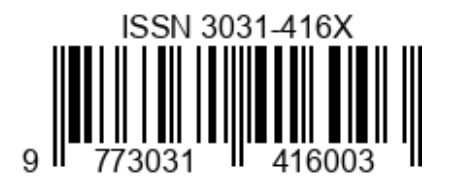Halal enzymatic cosmetic ingredients: The role of enzymes in ingredients selection
Abstract
The rising demand for halal products, especially within the cosmetics industry, has increased the need for cosmetic products to comply with Islamic laws. One of the challenges in achieving halal certification is the determination of the source of the active ingredients used in cosmetic products, such as enzymes. According to Islamic laws, enzymes derived from pigs or other animals that are not slaughtered are not considered halal. To ensure that the enzymes used in cosmetics are derived from halal sources, it is necessary to use enzymes generated from microorganisms through fermentation, provided that the raw materials and growth medium comply with Islamic laws. Additionally, halal cosmetics must meet regional and international standards, including the Indonesian Ulema Council’s Fatwa and the Malaysian Cosmetic and Personal Care Standards. This research provides a comprehensive review of the role of enzymes in selecting halal compliance cosmetic ingredients, focusing on the source of enzymes as a means of assessing the halalness of cosmetic products. It is essential to utilize halal enzymes such as those derived from plants to provide Muslim consumers with assurance when using cosmetic products.
References
Arshad ZIM, Amid A, Yusof F, Jaswir I, Ahmad K, Loke SP. Bromelain: an overview of industrial application and purification strategies. Applied Microbiology and Biotechnology. 2014;98(17):7283-7297. https://doi.org/10.1007/s00253-014-5889-y
Aufi F, Aji HM. Halal Cosmetics and Behavior of Muslim Women in Indonesia: The Study of Antecedents and Consequences. Asian Journal of Islamic Management (AJIM). 2021;3(1):11-22. https://doi.org/10.20885/ajim.vol3.iss1.art2
Baidamshina DR, Koroleva VA, Trizna EY, Pankova SM, Agafonova MN, Chirkova MN, Vasileva OS, Akhmetov N, Shubina VV, Porfiryev AG, Semenova EV, Sachenkov OA, Bogachev MI, Artyukhov VG, Baltina TV, Holyavka MG, Kayumov AR. Anti-biofilm and wound-healing activity of chitosan-immobilized Ficin. International Journal of Biological Macromolecules. 2020;164:4205-4217. https://doi.org/10.1016/j.ijbiomac.2020.09.030
Boxberger M, Cenizo V, Cassir N, La Scola B. Challenges in exploring and manipulating the human skin microbiome. Microbiome. 2021;9(1):1-14. https://doi.org/10.1186/s40168-021-01062-5
Brettel K, Müller P, Yamamoto J. Kinetics of Electron Returns in Successive Two-Photon DNA Repair by (6-4) Photolyase. ACS Catalysis. 2022;12(5):3041-3045. https://doi.org/10.1021/acscatal.2c00492
Cabinet Secretariat of The Republic of Indonesia. Statistics Indonesia Releases 2020 Census Results. 2021.
Chaurasiya RS, Umesh Hebbar H. Extraction of bromelain from pineapple core and purification by RME and precipitation methods. Separation and Purification Technology. 2013;111:90-97. https://doi.org/10.1016/j.seppur.2013.03.029
Cho UM, Choi DH, Yoo DS, Park SJ, Hwang HS. Inhibitory Effect of Ficin Derived from Fig Latex on Inflammation and Melanin Production in Skin Cells. Biotechnology and Bioprocess Engineering. 2019;24(2):288-297. https://doi.org/10.1007/s12257-019-0010-0
Dinar Standard. State of the Global Islamic Economy Report. 2020.
Ermis E. Halal status of enzymes used in food industry. Trends in Food Science & Technology. 2017;64:69-73. https://doi.org/10.1016/j.tifs.2017.04.008
Fahmi S. Halal labeling effect on Muslim consumers attitude and behavior. In 2017 International Conference on Organizational Innovation (ICOI 2017) Atlantis Press. 2017. p. 150-156. https://doi.org/10.2991/icoi-17.2017.26
Falanga V. Wound bed preparation and the role of enzymes: a case for multiple actions of therapeutic agents. Wounds. 2002;14(2):47-57.
Fatima N, Anwar S, Jaffar S, Hanif A, Muhammad Hussain H, Waseem Mukhtar M, Khan D. An Insight into Animal and Plant Halal Ingredients used in Cosmetics. In International Journal of Innovation, Creativity and Change. www.ijicc.net. 2020;14(8).
Feijoo-Siota L, Villa TG. Native and Biotechnologically Engineered Plant Proteases with Industrial Applications. Food and Bioprocess Technology. 2011;4(6):1066-1088. https://doi.org/10.1007/s11947-010-0431-4
Ferreira JF, Santana JCC, Tambourgi EB. The effect of pH on bromelain partition from Ananas comosus by PEG4000/phosphate ATPS. Brazilian Archives of Biology and Technology. 2011;54(1):125-132. https://doi.org/10.1590/S1516-89132011000100017
Fischer J. Islam, Standards, and Technoscience. Routledge. 2015. https://doi.org/10.4324/9781315667065
Gonçalves S. Use of enzymes in cosmetics: proposed enzymatic peel procedure. In Cos ACTIVE J. 2021;1:27-33.
Gomes RK, Damazio MG. Cosmetologia: descomplicando os princípios ativos. 4th ed. Red Publicações. 2013.
Grocholl L. Halal Cosmetics - Control of Ingredients. 2023.
Hackett C, Cooperman A, Ritchey K. The Future of World Religions: Population Growth Projections. 2019.
Júnior BRDCL, de Oliveira Martins F, Trevizano LM, da Capela AP, Dias TDMC, Pacheco AFC, Martins EMF. Applications of enzymes in food processing. In Research and Technological Advances in Food Science. 2022. Academic Press pp. 175-194. https://doi.org/10.1016/B978-0-12-824369-5.00003-8
Kashim MAM, Haris AAA, Mutalib SA, Anuar N, Shahimi S. Scientific and Islamic perspectives in relation to the Halal status of cultured meat. Saudi Journal of Biological Sciences. 2023;30(1):103501. https://doi.org/10.1016/j.sjbs.2022.103501
Kočevar Glavač N, Janeš D, Lumpert M, Stojilkovski K, Kokalj M, Tavčar Benković E, Gosenca Matjaž M, Hendrychová H, Gašperlin M, Lunder M, Baumgartner S, Glavač I, Kreft S, Zvonar Pobirk A, Žmitek K, Collegium G. Sodobna kozmetika: sestavine naravnega izvora. Širimo dobro besedo, Valenje. 2015. 217 219-224.
Kostović K, Pastar Z, Pasić A, Ceović R. Treatment of vitiligo with narrow-band UVB and topical gel containing catalase and superoxide dismutase. Acta Dermatovenerologica Croatica: ADC. 2007;15(1):10-14.
Lewis T, Stone WL. Biochemistry, Proteins Enzymes. 2020.
Lucas-Lledó JI, Lynch M. Evolution of mutation rates: phylogenomic analysis of the photolyase/cryptochrome family. Molecular Biology and Evolution. 2009;26(5):1143-1153. https://doi.org/10.1093/molbev/msp029
Mahomoodally MF, Désiré ALD, Rosette MALE. Catalase. In Antioxidants Effects in Health. Elsevier. 2022. pp. 81-90. https://doi.org/10.1016/B978-0-12-819096-8.00022-7
Majelis Ulama Indonesia. Standar Kehalalan Produk Kosmetika dan Penggunaannya. 2013.
Malaysian Standard. Halal food-General requirements (Third revision). 2019a.
Malaysian Standard. Malaysian Standard Halal cosmetics-General requirements (First revision). 2019b.
Malewicz NM, Ieong HFH, Oeck S, Kumowski N, Zhang Z, Shimada SG, LaMotte RH. Punctate Administration of Ficin as a human and animal model of non histaminergic itch. Journal of the European Academy of Dermatology and Venereology. 2022;36(8):1300-1307. https://doi.org/10.1111/jdv.18142
Merck. Papain, Cysteine Protease, Properties & Products. 2023.
Mitchel REJ, Chaiken IM, Smith EL. The Complete Amino Acid Sequence of Papain. Journal of Biological Chemistry. 1970;245(14):3485-3492. https://doi.org/10.1016/S0021-9258(18)62954-0
Monteiro VN, Silva RDN. Aplicações Industriais da Biotecnologia Enzimática. Revista Processos Químicos. 2009;3(5):9-23. https://doi.org/10.19142/rpq.v3i5.83
Omelchenko MV, Galperin MY, Wolf YI, Koonin EV. Non-homologous isofunctional enzymes: A systematic analysis of alternative solutions in enzyme evolution. Biology Direct. 2010;5:1-20. https://doi.org/10.1186/1745-6150-5-31
Osato JA, Santiago LA, Remo GM, Cuadra MS, Mori A. Antimicrobial and antioxidant activities of unripe papaya. Life Sciences. 1993;53(17):1383-1389. https://doi.org/10.1016/0024-3205(93)90599-X
Owoyele BV, Adebukola OM, Funmilayo AA, Soladoye AO. Anti-inflammatory activities of ethanolic extract of Carica papaya leaves. Inflammopharmacology. 2008;16(4):168-173. https://doi.org/10.1007/s10787-008-7008-0
Ramírez N, Serey M, Illanes A, Piumetti M, Ottone C. Immobilization strategies of photolyases: Challenges and perspectives for DNA repairing application. Journal of Photochemistry and Photobiology B: Biology. 2021;215:112113. https://doi.org/10.1016/j.jphotobiol.2020.112113
Ramírez-Gamboa D, Díaz-Zamorano AL, Meléndez Sánchez ER, Reyes-Pardo H, Villaseñor-Zepeda KR, López-Arellanes ME, Sosa-Hernández JE, Coronado-Apodaca KG, Gámez-Méndez A, Afewerki S, Iqbal HMN, Parra-Saldivar R, Martínez-Ruiz M. Photolyase Production and Current Applications: A Review. Molecules. 2022;27(18):5998. https://doi.org/10.3390/molecules27185998
Sancar GB. DNA photolyases: Physical properties, action mechanism, and roles in dark repair. Mutation Research/DNA Repair. 1990;236(2-3):147-160. https://doi.org/10.1016/0921-8777(90)90002-M
Terai Y, Sato R, Matsumura R, Iwai S, Yamamoto J. Enhanced DNA repair by DNA photolyase bearing an artificial light-harvesting chromophore. Nucleic Acids Research. 2020;48(18):10076-10086. https://doi.org/10.1093/nar/gkaa719
The Business Research Company. Global Enzymes Market Report 2021 - Opportunities and Strategies, Market Forecast and Trends. 2021.
The Business Research Company. Halal Cosmetics Global Market Report 2023 - By Type (Skin Care, Hair Care, Makeup, Others), By Distribution Channel (Offline, Online), By End User (Men, Women, Unisex) - Market Size, Trends, and Global Forecast 2023-2032. 2023.
Vandenberghe LPDS, Karp SG, Pagnoncelli MGB, Tavares MVL, Junior NL, Diestra KV, Viesser JA, Soccol CR. Classification of enzymes and catalytic properties. Biomass, Biofuels, Biochemicals: Advances in Enzyme Catalysis and Technologies. Elsevier. 2020. p. 11-30. https://doi.org/10.1016/B978-0-12-819820-9.00002-8
Vierock J, Hegemann P. Sensory photoreceptors in Chlamydomonas. In The Chlamydomonas Sourcebook. Elsevier. 2023. p. 205-222. https://doi.org/10.1016/B978-0-12-821430-5.00012-2
Wang J, Du X, Pan W, Wang X, Wu W. Photoactivation of the cryptochrome/photolyase superfamily. Journal of Photochemistry and Photobiology C: Photochemistry Reviews. 2015;22:84-102. https://doi.org/10.1016/j.jphotochemrev.2014.12.001

Copyright (c) 2023 Maheswari Alfira Dwicesaria, Mega Safithri, Dimas Andrianto, Ukhradiya Magharaniq Safira

This work is licensed under a Creative Commons Attribution-ShareAlike 4.0 International License.











